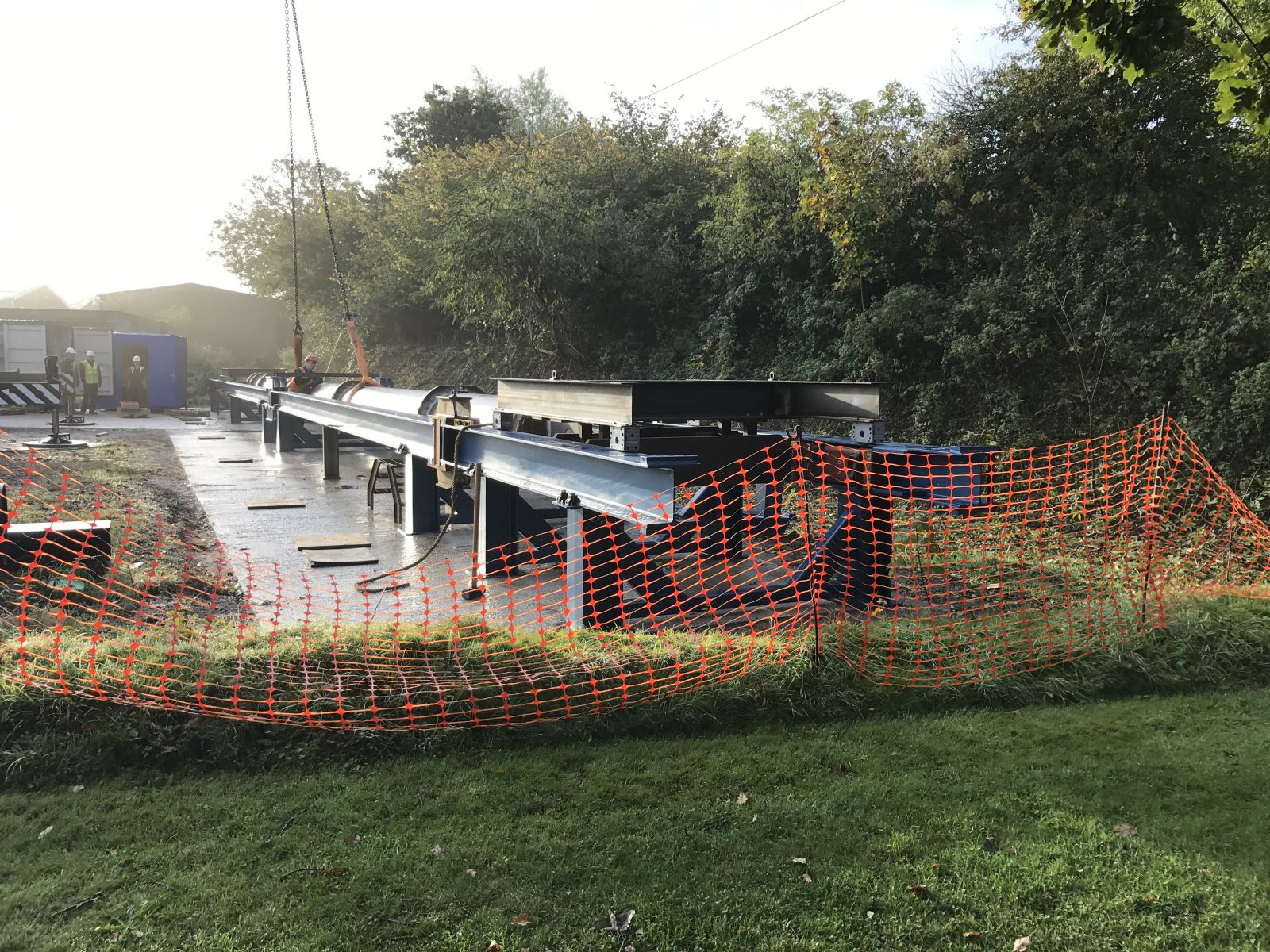Modulift Upgrades Compression Test Rig's Capacity to 1,650 Tonnes
 |
| Enlarge Image Modulift’s compression test rig can now proof test 1,500t beams to 1,650t. |
April 3, 2017 - Modulift has upgraded its compression test rig (known as CTR1), adding 50% additional capacity to the now 1,650-tonne machine. The rig was originally manufactured in 2003 for testing 600-tonne-capacity spreader beams, and in 2012, Modulift upgraded CTR1 to test 1,000-tonne beams to 1,100 tonnes. Today, following the second upgrade, 1,500-tonne beams can be tested to the new 1,650-tonne capacity.
Sue Spencer, technical director, said the first upgrade in 2012 including replacing and strengthening a small number of components. The latest project was more involved, as 60% of the rig was replaced with new components.
Every Modulift modular spreader beam consists of a pair of end units and a pair of drop links with interchangeable struts that can be bolted into the assembly between the end units to either lengthen or shorten the beam. Spencer explained that the unique design means they are essentially “pin-ended struts,” and the entire load is transferred through the spreader beam as a pure axial compression load. The main rails of the rig are therefore in tension when the spreader beam is under test.
“We have squeezed as much capacity out of the main rails of the rig as possible without having to replace the whole machine," she said. "We have increased the width and height of the rig so larger diameter spreaders can be tested. If there is demand in future to go even bigger we will consider it, but that would certainly mean replacing the rails.”
Upon completion of a beam’s manufacturing process, it is placed into the test rig and pinned into place at each end. A compression load is then applied to the pin at one end, whilst supporting the pin at the other. The drop links are then tensile tested separately in their own test rig, also located at Modulift’s facility. The on-site tensile rig can test drop links up to 50 tonnes of capacity, while independent test houses have conducted tests on Modulift’s behalf up to 825 tonnes.
“Tensile test rigs are quite common, where the applied force is in the opposite direction to compression test rigs," Spencer said. "These rigs are popular for testing slings, shackles and other tensile items. However, compression test rigs do not generally exist, which is why we manufactured our own and specifically designed it to fit our design of spreader beams.”
Modulift keeps the machine outdoors because of dimensions that now accommodate 28m-long beams. CTR1 comes into its own at the extremities of its capabilities where advantages over staging live tests using a crane and other rigging equipment are most apparent.
“Traditional beam designs with fixed lugs welded at each end [without separate drop links] cannot be tested in our rig as applying an axial load will not fully mimic all the forces that are going through the spreader beam in real situations," Spencer said. "This type of fixed-end spreader beam will experience induced bending moments and would need a live lift with a crane and weights to test them properly. Imagine the logistics involved in such a process where a large beam is concerned.”

